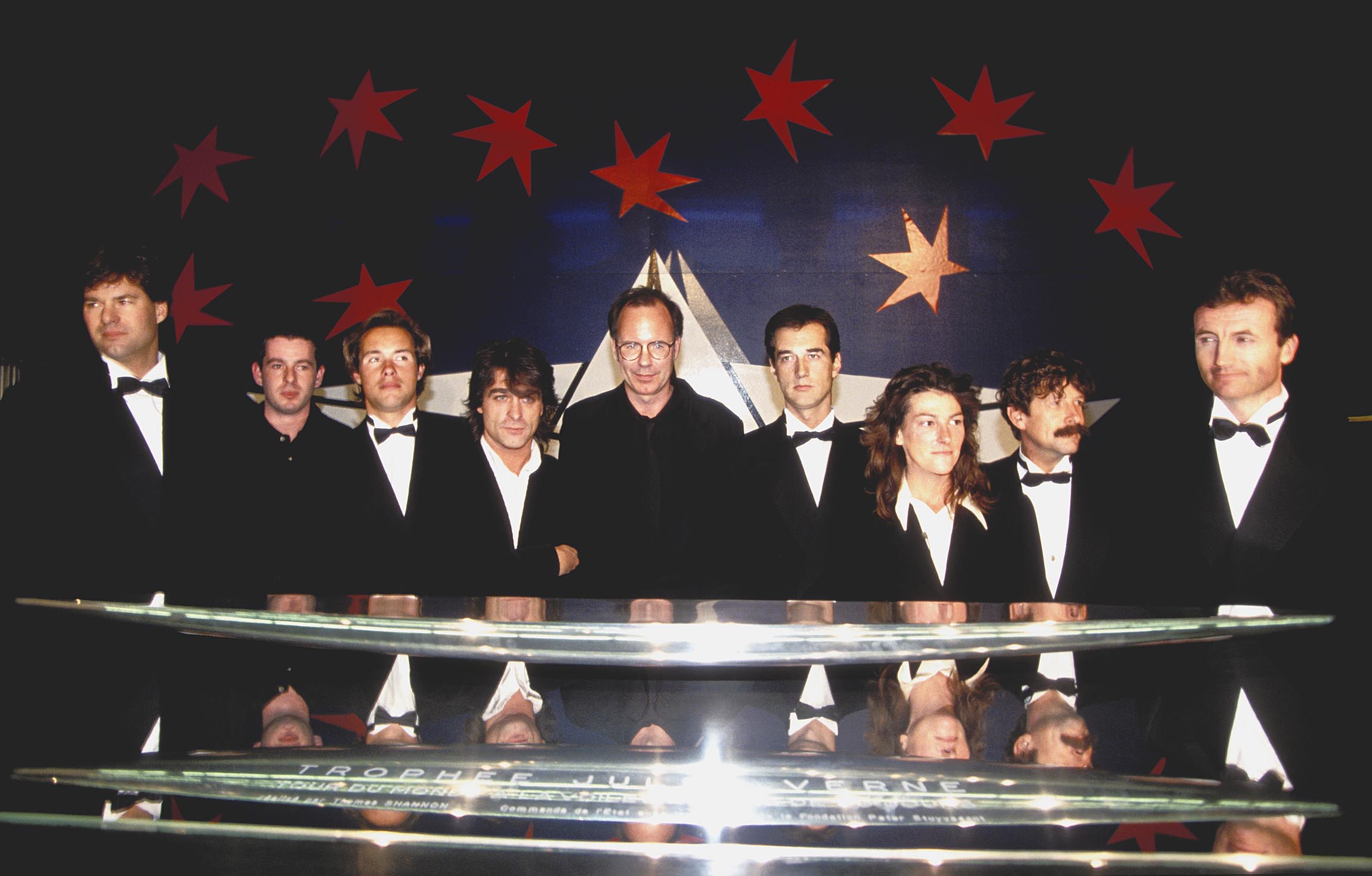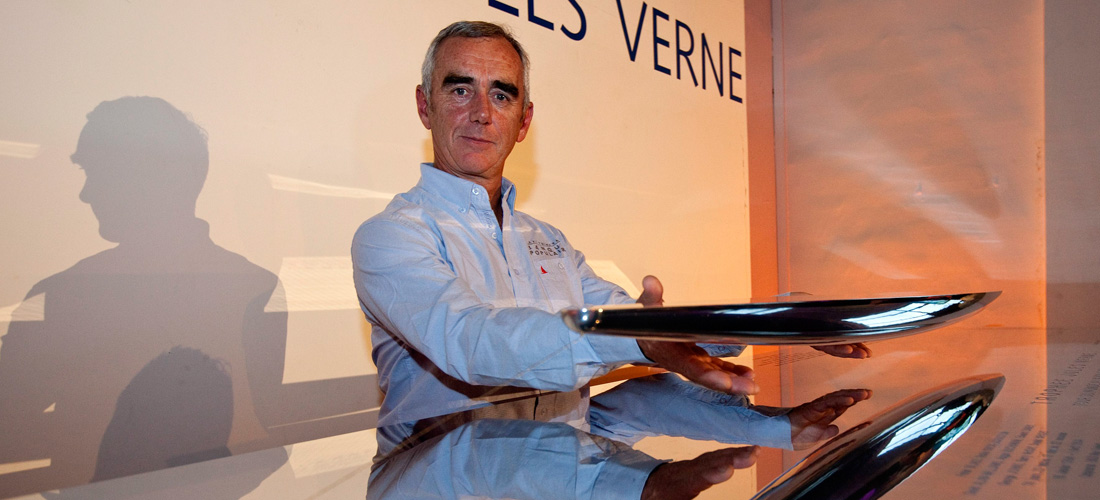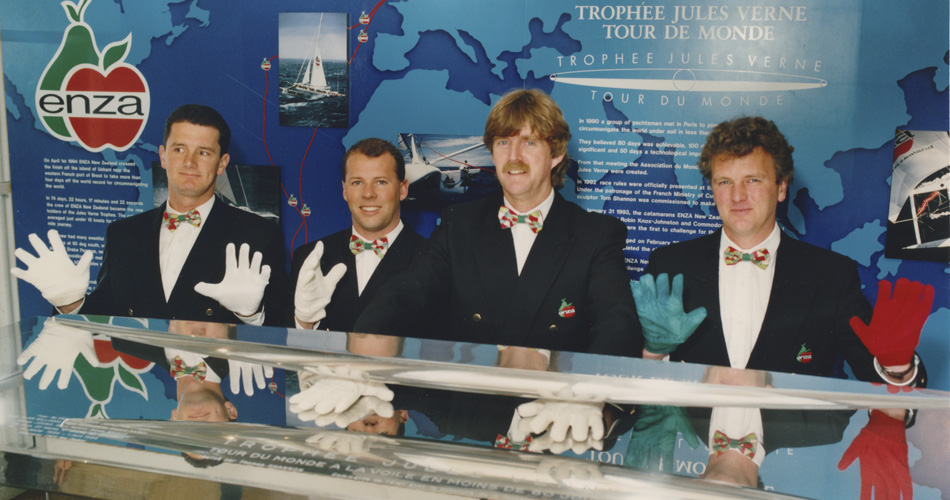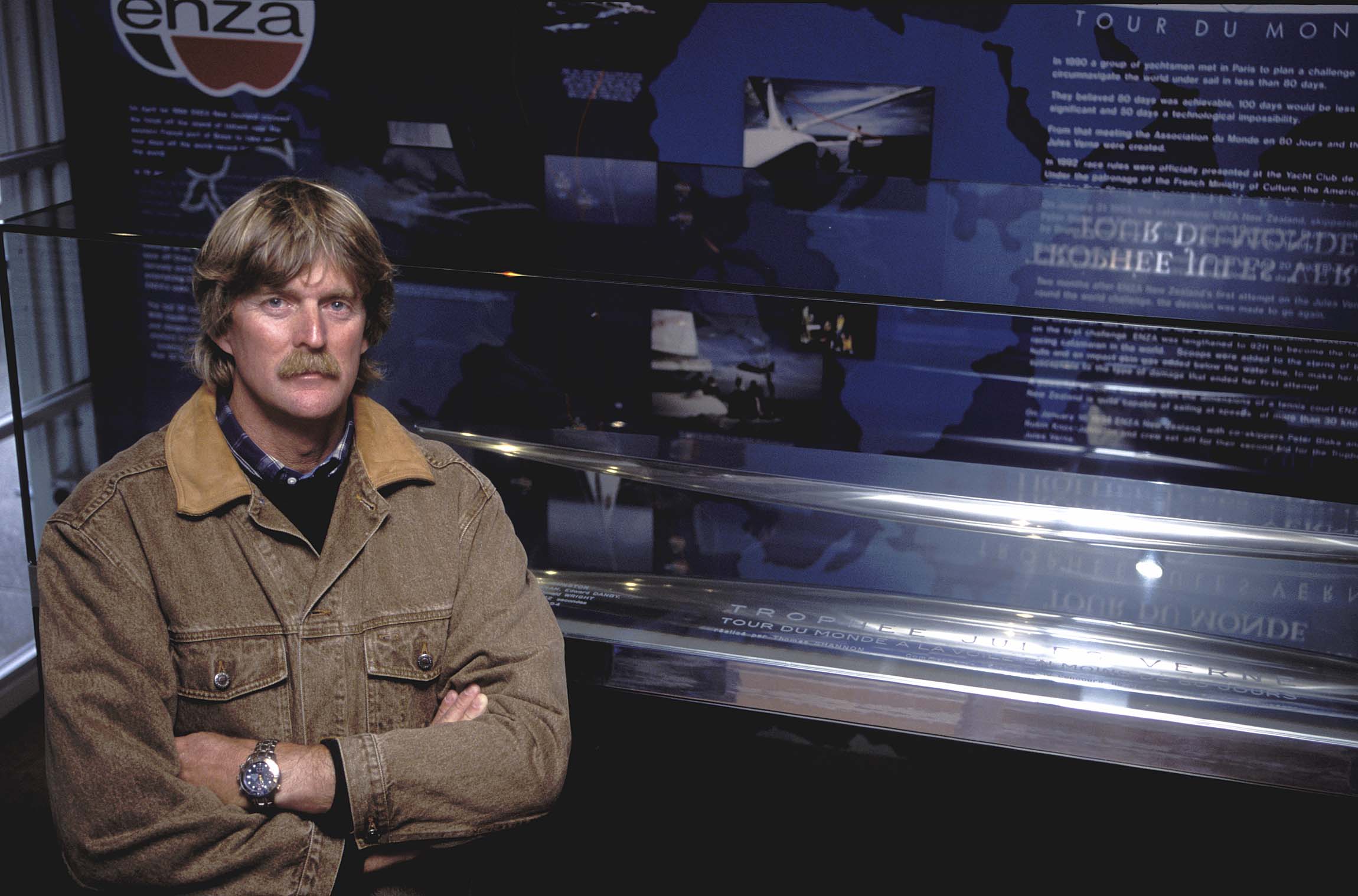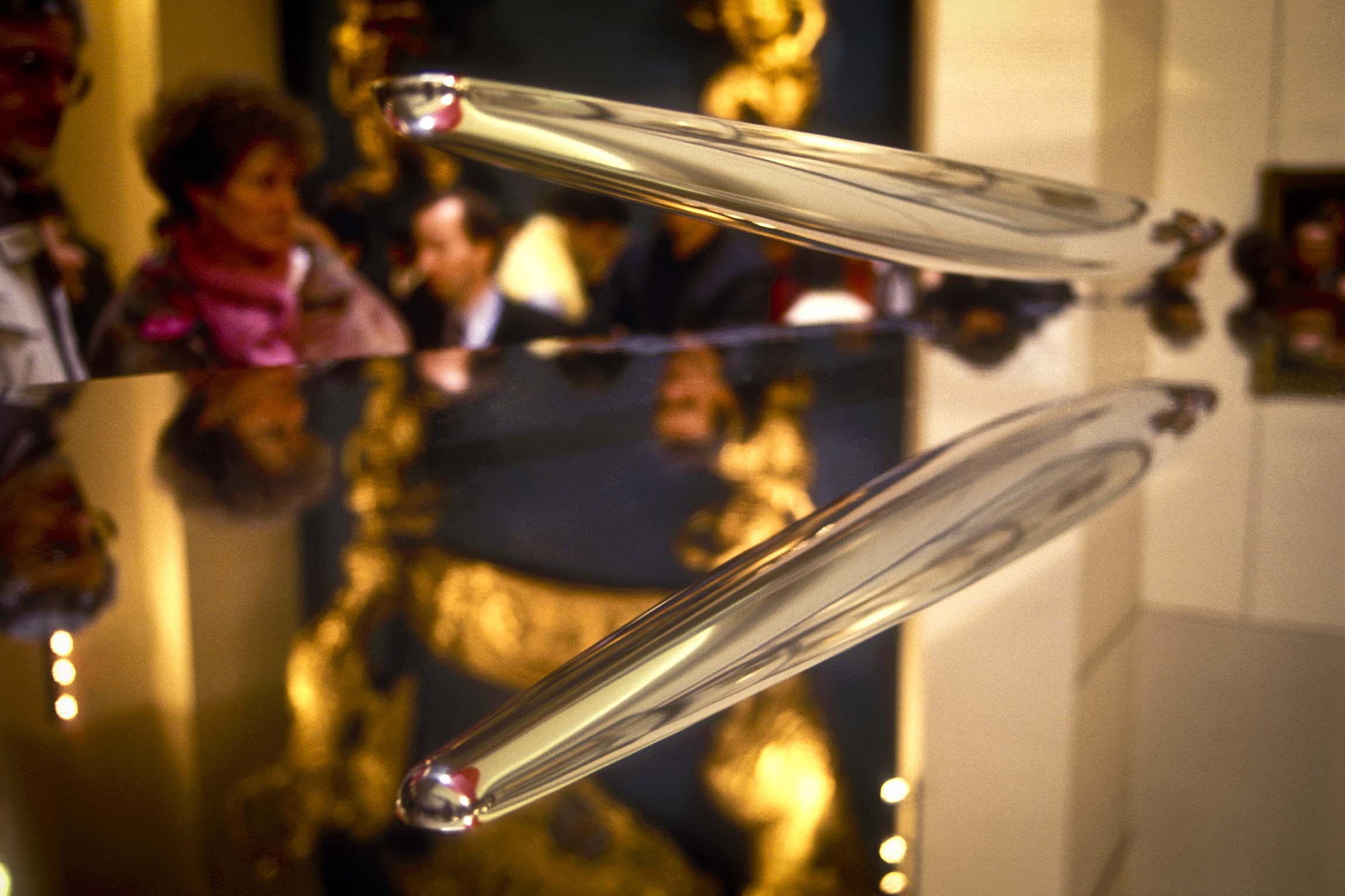“ My wish was the sculpture had to include the shapes, the dimensions and proportions of the main players of the event: the Boat, the Humans, but also the Sun, the Earth and the Moon. ”
Thomas Shannon, sculptor, designer of the Jules Verne Trophy.
The design of the Jules Verne Trophy was commissioned from American artist Thomas Shannon(1)(1)Find out more on: www.tomshannon.com by the French Ministry for Culture.
The sculpture, in the shape of a hull hovering over a magnetic field, is suspended in space.
Its shapes are defined by a set of curves proportional to the circumferences of the sun, the Earth and the moon – celestial bodies that play a critical role in tides and sailing.
Thomas Shannon explains : “A cosmical eye could see the glittering arrays of the Sun creating the moving Winds of the Universe. These winds fill the sails and beat the ocean waters in giant waves. Added to this, the Moon rhythmical influence on our whirling planet gives birth to the Tides.”
Along with these astronomical forms, the size of the boat is defined by human dimensions: its length is equal to that of a man with his arms stretched out while its height equal to that of the same man.
At every trophy award ceremony, the sculpture is presented to the triumphant skipper who positions the object on the magnetic field, on which the boat floats freely. The glass case that protects this magical levitation is then replaced until the next record to be hailed by the Jules Verne Trophy.
The Jules Verne Trophy work, held by the French National Marine Museum in accordance with the wishes of the founding members of the Tour du Monde en 80 Jours association, is part of the collections of the French National Foundation for Contemporary Art.



